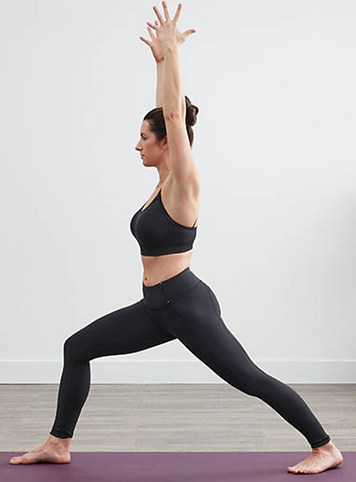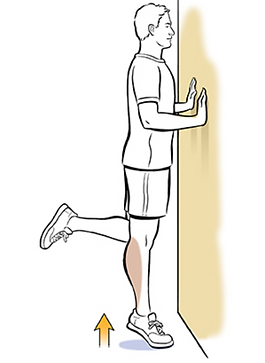Balance Exercises
From Lorraine Goldman's Presentation at the RAM Luncheon on August 19, 2025
Click a link to view an Exercise.
Click 'Return to Menu' to choose a different exercise. Scroll down to see the Return to Menu link.
Chin Tuck

Correction of postural alignment begins with a chin tuck.
Pull shoulders up, back and down and feel your head glide back
Neck Range of Motion

Range of motion of the neck is critical for optimal assessment of the environment as we walk and drive!
Chin tuck FIRST!! Let the head roll back - avoid pain and lightheadedness, Roll head forward chin into sternal notch, back to level and turn head right and left, back to center and side bend right and left.
Snap, Crackle and Pop WITHOUT PAIN can be normal. IF YOU EXPERIENCE PAIN WITH NECK MOTIONS, you may want to consult with an MD, especially if pain is associated with arm numbness, or sweating
Range of Motion

Hold onto the back of a chair while facing a front corner of the seat. Now lift your right leg up and across the seat and back. Repeat with the Left leg. Alternate 12-15 times each leg. If a chair is too high for your hip/knee flexion ability, use a foot stool and hold onto a table, counter, wall.
Strength and Balance

Repeat 8 - 10 times without a hand hold;
Turn head in the opposite direction of the leg you are lifting as you lift and swing the leg.
IF YOU FEEL UNSTEADY, STOP!, PUT YOUR FOOT DOWN.
Strength and Stability
Sit to 1/2 Stand

Warrior 1

Sit to 1/2 stand:
From standing erect, sink into your knees and ankles, not allowing knees to travel beyond the toes - push the butt out and raise the arm, or cross them over the chest, or reach them out, or let them dangle. Hold for 60 sec. (slowly building tolerance) and progress to 3 minutes. Practice bare foot if possible.
Warrior One:
From erect standing Step right leg as far back as possible, keeping the heel down and the foot a little pigeon-toed. Slowly bend the left knee, then as you inhale lift your arms as high as possible. Hold 60 seconds. Practice on a rug bare foot. For stability, adjust distance forward/back and side to side between feet.
These 2 exercises also lengthen the front line of the body
For either exercise, increase the balance/reflex challenges by practicing on a dense foam pad.
From erect standing Step right leg as far back as possible, keeping the heel down and the foot a little pigeon-toed. Slowly bend the left knee, then as you inhale lift your arms as high as possible. Hold 60 seconds.
Practice on a rug bare foot. For stability, adjust distance forward/back and side to side between feet.
Core Planks
Wall Plank
Low Floor Plank



High Floor Plank
Alignment is critical, as is wrist tolerance. If standing with hands or forearms on wall, keep the heels down.
You can use a chair if you want to progress from wall plank but floor planks are too challenging.
BRACE THE CHAIR AGAINST A WALL OR TABLE FIRST!
Heel Raises


Keep the big toe in touch with the floor at all times - assuming a pigeon-toe postioning if you have bunions. Warm up with double limb raises, progress to single limb. For a stability challenge, perform on high density foam cushion
Seated Core

Sitting at the front edge of a chair, posture erect, reach out legs with knees straight, toes up and heels down.
Fold arms in front of chest - lifted to be parallel to floor, HINGE back from hip joints.
DO NOT REST ON THE BACK OF THE CHAIR OR SLUMP, Please!
Now rotate arms to right, back to center and left. Repeat as many repetitions as you can.
Build slowly to tolerate 3 sets of 15 to each side.

